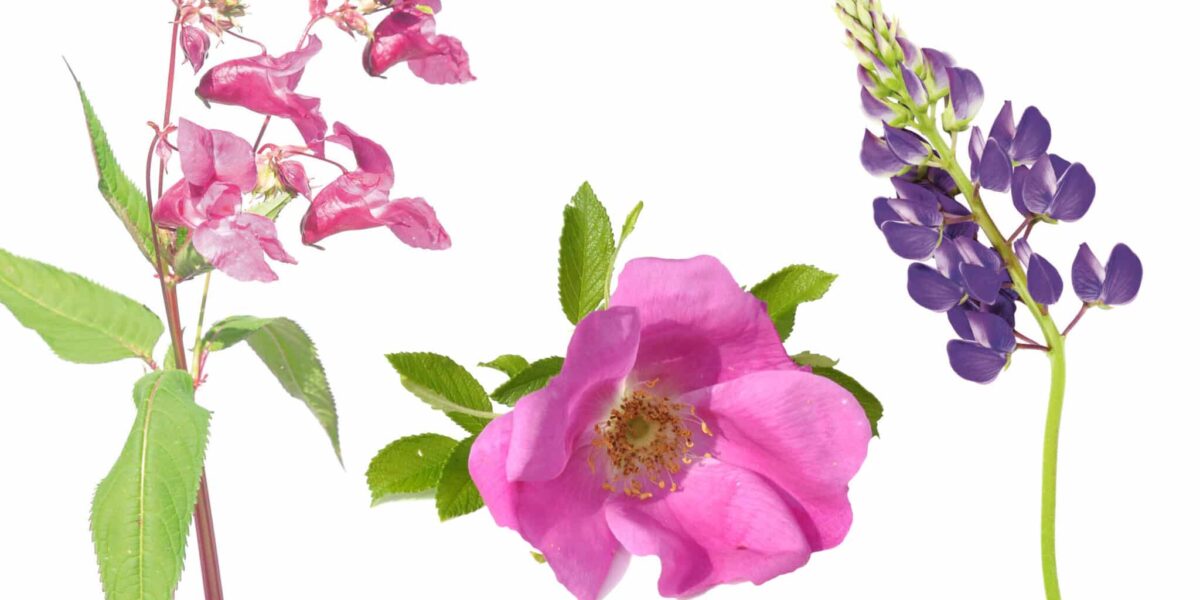Controlling invasive plant species classified as harmful is an important step in safeguarding biodiversity. On its substation properties, Fingrid acts in the capacity of landowner, so it is responsible for eradicating
harmful invasive plant species.
“We can combat the spread of seeds by means such as avoiding unnecessary passing through areas with invasive plant species. If necessary, preventive measures may also be taken on Fingrid’s substation properties,” says Nina Nordblad, Environmental Specialist at Fingrid.
At Fingrid’s substations, the main focus is to identify the most common harmful invasive plant species occurring in Finland, such as hogweed, Indian balsam, garden lupines, Japanese rose, Japanese knotweed and giant knotweed.
Different plant species are controlled in different ways. If the species spreads from seeds, like the garden lupine, the flowers are pruned before the seeds end up in the ground. Japanese rose also spreads from seeds, as well as root suckers, so it can also be disposed of by digging it up. Indian balsam is destroyed by mowing it down, but hogweed should never be treated in this way.
“Hogweed sap can cause the skin to burn in the sunlight, representing an occupational safety risk. Hogweed is removed by digging it up, covering it, or removing the flowers,” advises Miia Korhonen from Luontoturva, an organisation specialising in the control of invasive plant species.
“It is very important to remove all fertile parts of plants and place them in sacks in mixed waste or take them to the dedicated disposal points at waste disposal centres, so they do not end up spreading in other natural habitats,” she adds.
Korhonen and Nordblad have trained the contractors working at substations to identify and control harmful invasive plant species, as identifying these is of paramount importance. In summer 2022 training was put into practice.
“The training included instructions on how the various plant species spread and the ways of limiting such spread. During the past summer, surveys of invasive plant species on substation properties were started to obtain more information of possible occurrences,” Nordblad says.






